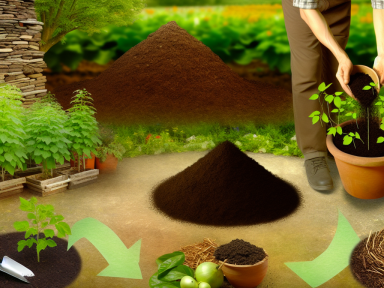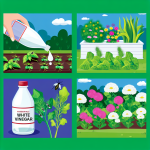The Importance of Soil Health
Revitalizing old soil is a crucial task that can breathe new life into your garden. Over time, soil can become compacted, depleted of nutrients, and less hospitable to plant roots. Here are some secrets to restore its vitality:
1. Testing and Understanding Your Soil
- **Soil Testing:** Before you can rejuvenate your soil, you need to understand its current condition. Use a soil test kit to measure pH and nutrient levels.
- **Soil Profile:** Dig a small hole and examine the layers. This will give you insight into texture, compaction, and organic matter presence.
2. Correcting pH Levels
The pH level of soil affects nutrient availability. Most plants prefer a pH between 6.0 and 7.0. Here’s how to adjust it:
- **Acidic Soil:** Add lime (calcium carbonate) to raise pH.
- **Alkaline Soil:** Incorporate sulfur or peat moss to lower pH.
3. Incorporating Organic Matter
Organic matter enhances soil structure, provides nutrients, and encourages beneficial microbial activity. Consider these organic additions:
- **Compost:** A mixture of decomposed plant material, compost slowly releases nutrients.
- **Manure:** Well-rotted animal manure is a powerhouse of nutrients.
- **Cover Crops:** Green manures such as clover or rye can be grown and then turned into the soil.
4. Using Amendments Wisely
Specific amendments can address particular soil deficiencies:
- **Bone Meal:** High in phosphorus, great for root development.
- **Blood Meal:** Rich in nitrogen, boosts leafy growth.
- **Epsom Salts:** Provides magnesium and sulfur, essential for chlorophyll production.
5. Improving Soil Structure
- **Aeration:** Use a garden fork or aerator to break up compacted soil, allowing roots to breathe and water to penetrate.
- **Mulching:** Apply organic mulch to maintain moisture and temperature, minimize weed growth, and add organic matter as it decomposes.
6. Embracing Mulching
Mulching can significantly improve soil health. Here’s how to do it right:
- **Organic Mulches:** Use shredded leaves, straw, or wood chips.
- **Layering:** Apply a two to three-inch thick layer, keeping it away from plant stems to prevent rot.
7. Fostering Beneficial Microorganisms
Healthy soil is teeming with life. Encourage these tiny allies:
- **Avoid Chemical Pesticides:** They kill beneficial organisms along with pests.
- **Use Compost Teas:** These are rich in microorganisms that can boost soil fertility.
- **Rotate Crops:** Crop rotation interrupts pest cycles and prevents soil depletion.
8. Practicing Crop Rotation
Rotating the types of plants grown in an area prevents nutrient depletion and reduces disease buildup:
- **Leafy Crops:** Such as lettuce and spinach.
- **Fruit-Bearing Crops:** Like tomatoes, peppers, and eggplants.
- **Root Crops:** Including carrots, potatoes, and beets.
- **Legumes:** Such as beans and peas, which fix nitrogen in the soil.
9. Watering Wisely
Proper watering techniques can drastically improve soil health:
- **Deep and Infrequent:** Water deeply to encourage deep root growth, but avoid frequent shallow watering.
- **Drip Irrigation:** Reduces water usage and prevents soil erosion.
- **Rain Barrels:** Collect rainwater to use during dry spells, reducing reliance on chemically-treated tap water.
By employing these techniques, you can transform your old, tired soil into a thriving, nutrient-rich environment that will support healthy and vigorous plant growth for seasons to come.




GIPHY App Key not set. Please check settings